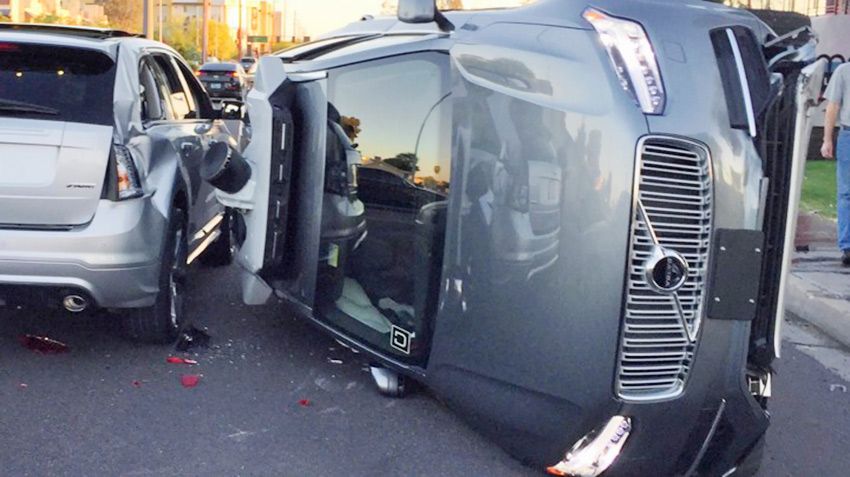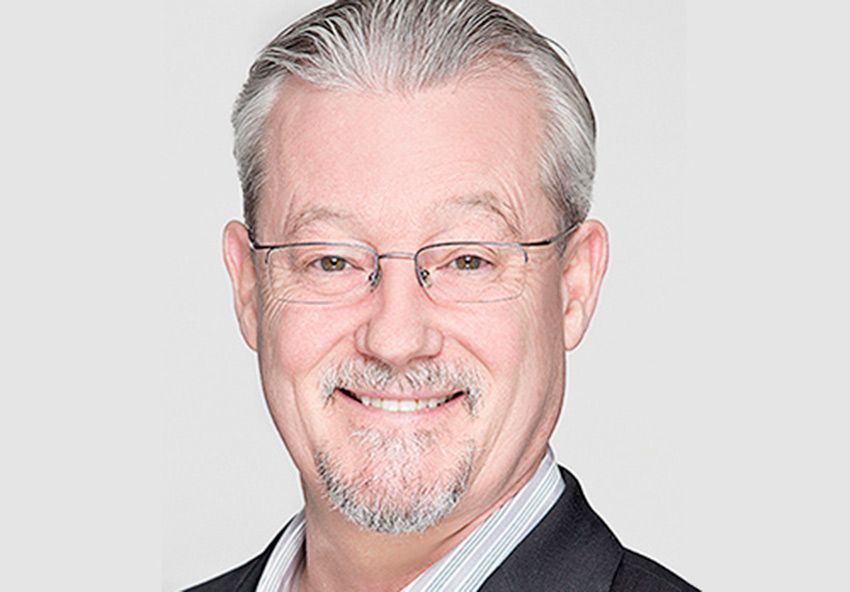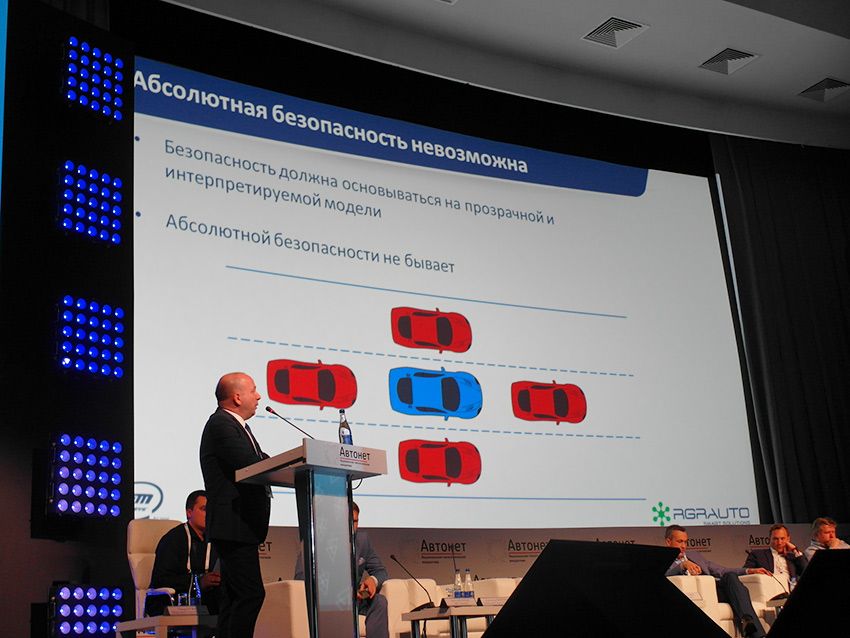How many people will be able to kill robomary?

2 April 2019
Associate Professor of medicine Ricardo Martinez predosteregaet from reckless race for besplatnosti, threatening the safety of passengers and pedestrians
On the website Automotive News associate Professor of emergency medicine at Emory Medical school Ricardo Martinez, who was NHTSA administrator from 1994 to 1999, published an article in which he argues on the topic: "What is an acceptable mortality rate for Autonomous cars?".

So, before the surgeon will open your chest, ask him about the acceptable level of mortality for patients. When you Board the plane, ask the pilot about acceptable mortality rate for passengers.
You can think of and hope for their response that "level zero", thereby reflecting the underlying philosophy, the primary task and challenge for these human activities by which they make decisions that affect your health and safety.
On the contrary, the race for the early release of Autonomous cars on the market seem to have abandoned this notion of public safety. The main sectoral idea is that once errors are resolved, more people will be saved by the promise of robotic vehicles that, Yes, it will kill several people a year, but it's "quite acceptable" in the name of progress.
It's not supposed to be!
Many participants in the race for the development of Autonomous vehicles have years of experience or knowledge about all the complicated aspects of driving, the problems of road safety or about how to develop progress in the field of security in the transport sector. There is not even a single security principle that identifies the design and methods of testing of Autonomous cars. For example, the manufacturer Tesla Inc. chastised the media for what they are "focused on the death of the client that failed the software's Autopilot," noting that people die in car accidents every day. Yes, people suffer from accidents, but this should not be an excuse to kill them even more.
"Crazy driving"
History gives lessons and provides opportunities for the accelerated development of Autonomous vehicles that are more safe and coordinated manner. American automobile industry (in the mid 1960s – ed.) starting with the fact that a vehicle almost never used the equipment for safety, and actively fought against the introduction of government safety standards, claiming it would increase costs and harm sales. Efforts to ensure safety, they insisted, should be focused on the driver or the "crazy driving".
Safety has become a standard equipment of automobiles only after Federal legislation in the early 1960-ies created the National Directorate of traffic safety on highways (NHTSA) at the U.S. Department of transportation, which issued binding rules of vehicle safety. Many regulations were revised in the 1990s to better match the spirit of the time and encourage expansion of innovation and use of new technologies. Vehicles are becoming safer with each passing year, and manufacturers are now increasingly competing in terms of security.
Automakers and component suppliers raspolagaet a wealth of experience and knowledge based on the billions of miles traveled, hundreds of millions of cars and the collected data packets received in the result of crash tests of vehicles, consumer reviews and dealers, investigation of real accidents and opinions about safety. The basic premise is to test and ensure the safety of vehicle designs before releasing them to market. That is why there are reputable automotive test laboratory and testing areas.
The race for the market of Autonomous cars has turned this process on its head. The governments of the individual States, technology companies and car manufacturers seek to be first to market, pushing the safety to the last place. Autonomous vehicles will be tested on our streets to truly learn and improve, but this step needs to occur after serial passage of the stages of improving security, and not before. Simplified use of roads and streets for public use as a testing ground for bespilotnikov, and our loved ones and children as test dummies for crash tests is not only wrong, it's just vile cynicism.
uniform policy
As an emergency physician, I know that not all injuries can be cured, and not every accident victim can be saved. But the main principle in medicine, the oath which every doctor takes (in Russia known as the Hippocratic Oath – ed.) is that: first, we do no harm to our patients.
Autonomous vehicles can provide tremendous advantages from the point of view of security, improving the environment, improving health while maintaining and even increasing mobility. Death in a car crash is still the leading cause of death in the United States, and around the world. In order to obtain real benefits and to win public trust, should be developed by a single strategy commitment to security, according to which the coordinated efforts of governments and the automotive industry on the safety of Autonomous vehicles for the mass market. It is not only possible, it's already being done in several countries around the world.
One example stands Vision Zero is a philosophical concept, which started in Sweden in 1990 and is based on two radical ideas that are now well entrenched. First, every injury and every death on the road is unacceptable! Second, constructors and designers of vehicles and roads will bear personal responsibility for the security of their systems. This is the General thinking brought together different groups around a common strategy and has allowed them to achieve impressive results in reducing mortality from road accidents.
In the United States, various government agencies, technology companies and car manufacturers have different approaches to Vision Zero, but none of them dared to really "understand the problem". If you removed the driver from control of his vehicle, shouldn't someone take responsibility? For example, doctors and nurses do it every day.
The resolution of the problem, accepting responsibility and accountability necessary to build public confidence needed for success.
Another example is the Institute of health (HEI), public-private type, which seeks solutions to potential and existing health risks in the transport sector. It represents a type of independent structure necessary to bring all sides to the negotiating table Another example is the Institute of health impacts, public-private partnership that seeks solutions for potential and recognized health risks in the transport sector. It represents a type of independent leadership, is necessary in order to attract all parties to the table to win the trust of the public and to ensure that the United States remained the world leader in the development of Autonomous transportation.
You need to convince the big players in the extremely competitive automotive and technology industries to work together to achieve a common goal of security because the main priority for today does not seem so profitable. The need to oblige them to take responsibility may be even more challenging. However, the possibility of accelerating the development, introduction and commercial success of Autonomous cars is due to the innovation of American origin requires it.
Skeptics say: "You can't really prevent all deaths and injuries of vehicles, isn't it?" The answer, of course, no, but you can try to adopt that philosophy that nobody lays ahead harm...

PS About the same at a number of conferences on digital and Autonomous interpretation, for example, the General Director of the company LAWTO Roman Ferster (Israel): "the Level of development of modern technologies has not yet been possible to achieve "absolute security" on the roads and because mankind (and for the beginning of the community in each individual country) should determine acceptable mortality rate with the use of Autonomous vehicle". In his opinion, such a level is of the order of ~30-50 people a year in the United States against the current 35 thousand..
|
|
|
Element was not found.








